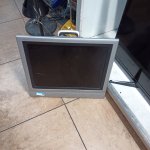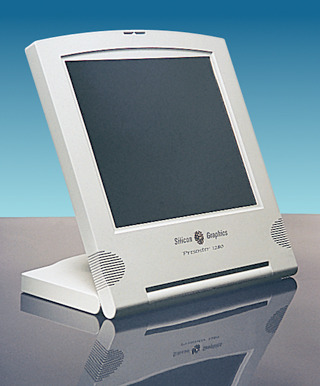Zenith had some 27" System III CRT TVs with a VGA input that supported up to 800x600, however I believe they simply had a built-in VGA to composite/S-video converter, thus the image quality wasn't very good.
If we're counting 4x3 TVs as long as they do higher than 480i/p resolution then it's worth considering that there were a number of 4x3 CRT rear projection TVs that were sold from the 1990's into the early 2000s that were sold as "HD ready" and supported higher resolutions, although exactly *what* they supported varied. I want to say at least some of them were basically multisync monitors that could lock onto a fairly flexible range of resolutions in order to be ready for "whatever" HD TV actually turned out to be when the standard was finalized, but I'll also admit that my knowledge of this area is entirely second/third hand.
(Digging around I did stumble across a review for a fairly late Hitachi model that supported 1080i, but would automatically *only* scale it letterboxed, not fill the whole height of the 4x3 screen with it... which would seem to rule it out from consideration.)
Of course if we count projectors then the sky's the limit, sizewise. Lecture halls and other venues started getting multisync projectors in the 90's that could do better-than-TV resolutions the size of movie screens.(*)
*Edit: Actually, I *have* a perfect example in my possession. (Although I say "have" with a big asterisk; it's somewhere in the garage, I haven't powered it or the Indy it came with on in 20 years, and it was pretty flaky even back then, so I'm not going to pretend it still works. If I ever dig it out I should probably offer it to a good home)
The SGI Indy Presenter:
It's a 12" 1024x768 TFT display that lets you pull the back off it (The hatch is a big white frosted piece of plastic with a mirrored back to act as a diffuser for the side-lights used in direct-view mode) and lay it on top of those old-fashioned overhead projector that all the old people in the room still remember from school. SGI's marketing material said it was good for up to 35 FOOT displays. Which seems optimistic, but why not.
Edit 2: ... Kind of crazy this came out in 1994. Also crazy: it cost just shy of $10,000.


